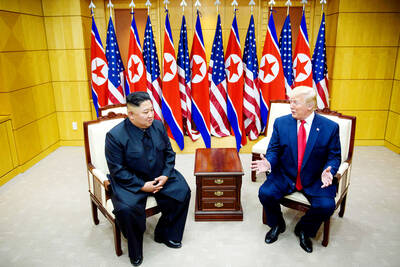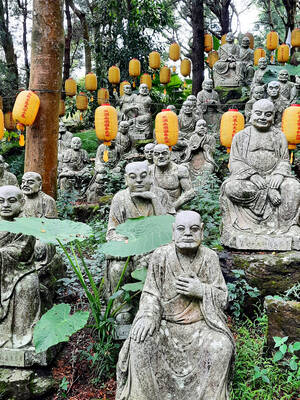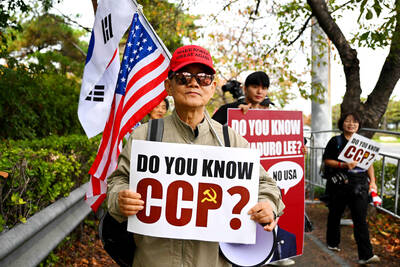Six months after the Asian release of the first segment of his epic diptych, John Woo (吳宇森) returns to the big screen with Red Cliff 2 (赤壁:決戰天下). Featuring moments of high drama, exciting action sequences and an arresting story about brotherhood, bravery and romance, the blockbuster further cements Woo’s triumphal return to Chinese-language cinema after a long hiatus in Hollywood where the director never managed to live up to the promise of his Hong Kong oeuvre.
After a brief recap of what took place in the previous installment, the audience is thrown back into the battlefield action where Cao Cao’s (Zhang Fengyi, 張豐毅) troops play a game of cuju (蹴鞠), an ancient Asian kind of football, as they wait for the battle of Red Cliff to start. In an inconspicuous corner, warlord Sun Quan’s (Chang Chen, 張震) spirited sister Sun Shangxiang (Zhao Wei, 趙薇), disguised as an enemy soldier, sends information about the enemy’s position by carrier pigeon to Zhuge Liang (Takeshi Kaneshiro, 金城武).
The news encourages Sun Quan’s coalition forces, which are formulating plans to defeat Cao Cao’s vastly superior force across the bay. Typhoid has broken out in Cao Cao’s camp, causing heavy casualties. But it doesn’t take long before the shrewd prime minister and strategist turns the disease to his advantage by rafting the infected corpses over to Sun’s camp.
A battle of wits ensues. Zhou Yu (Tony Leung Chiu-wai, 梁朝偉) successfully spreads fear and confusion among the enemy forces by false information. In the meantime, Zhuge Liang draws on his familiarity with the local weather and tactical expertise to steal weapons supplies from Cao Cao’s troops.
As a strong wind blows, both sides ready for a battle to the death. Meanwhile, Zhou Yu’s beautiful wife Xiao Qiao (Lin Chi-ling, 林志玲) ventures into Cao Cao’s camp alone in an attempt to use her diplomatic skills to prevent further carnage.
Needless to say, the good guys win, thus ensuring the survival of Sun Quan and Liu Bei and heralding the beginning of China’s Three Kingdoms period and, ultimately, the reunification of the country under the Jin Dynasty.
It is never easy to tackle a legend that has long been popularized and romanticized in countless textbooks, television series, video games and comic books, not to mention the 120-chapter Romance of the Three Kingdoms (三國演義), one of the four great classical novels of Chinese literature (四大名著). Audiences already have their own ideas about the events and characters. But though Red Cliff is not immune to criticism, the screenwriters have successfully condensed the richness of history and legend into an easy-to-follow structure that balances action and drama with Woo-esque romanticism.
Maintaining the fast pace of the first installment of Red Cliff — Parts 1 and 2 are being shown in a single, condensed version outside East Asia — the second installment smoothly shifts between action sequences, battle planning and anecdotes that flesh out the main characters, adding extra layers to what might otherwise have been a cumbersome epic. Everything is packed into a well-scripted narrative that will not overwhelm viewers. Woo defines and develops the characters, especially the two female roles played by China’s Zhao Wei and Taiwan’s Lin Chi-ling, who are accorded significant narrative weight, in contrast to their more decorative function in the first part.
Woo’s interpretation of the legendary figures is unconventional but works well within the director’s focus on loyalty and brotherhood. The vernacular language spoken by Woo’s characters may lack gravitas, but it gives the film a distinct charm and vitality.
The final battle scenes are grandiose, but the denouement is a tad flabby as military pageantry, martial arts sequences and close-ups of the heroes and villains’ grimacing faces grow stale after several reprises.
China’s Zhang Fengyi is the surprise star of the film. More than simply the power-hungry villain as depicted in Romance of the Three Kingdoms, his Cao Cao is an emotionally complex and charismatic leader who blushes before the woman he loves. Tony Leung Chiu-wai is as dependable as ever in his role as the composed Zhou Yu, while Takeshi Kaneshiro engages attention as the slightly effete strategist.
Given more to do this time around than in the first part, supermodel-turned-actress Lin exhibits sufficient gumption to carry off her part as Xiao Qiao. Taiwan’s Chang Chen, however, underwhelms in the supporting role as the indecisive Sun.

US President Donald Trump may have hoped for an impromptu talk with his old friend Kim Jong-un during a recent trip to Asia, but analysts say the increasingly emboldened North Korean despot had few good reasons to join the photo-op. Trump sent repeated overtures to Kim during his barnstorming tour of Asia, saying he was “100 percent” open to a meeting and even bucking decades of US policy by conceding that North Korea was “sort of a nuclear power.” But Pyongyang kept mum on the invitation, instead firing off missiles and sending its foreign minister to Russia and Belarus, with whom it

When Taiwan was battered by storms this summer, the only crumb of comfort I could take was knowing that some advice I’d drafted several weeks earlier had been correct. Regarding the Southern Cross-Island Highway (南橫公路), a spectacular high-elevation route connecting Taiwan’s southwest with the country’s southeast, I’d written: “The precarious existence of this road cannot be overstated; those hoping to drive or ride all the way across should have a backup plan.” As this article was going to press, the middle section of the highway, between Meishankou (梅山口) in Kaohsiung and Siangyang (向陽) in Taitung County, was still closed to outsiders

Many people noticed the flood of pro-China propaganda across a number of venues in recent weeks that looks like a coordinated assault on US Taiwan policy. It does look like an effort intended to influence the US before the meeting between US President Donald Trump and Chinese dictator Xi Jinping (習近平) over the weekend. Jennifer Kavanagh’s piece in the New York Times in September appears to be the opening strike of the current campaign. She followed up last week in the Lowy Interpreter, blaming the US for causing the PRC to escalate in the Philippines and Taiwan, saying that as

The Chinese Communist Party (CCP) has a dystopian, radical and dangerous conception of itself. Few are aware of this very fundamental difference between how they view power and how the rest of the world does. Even those of us who have lived in China sometimes fall back into the trap of viewing it through the lens of the power relationships common throughout the rest of the world, instead of understanding the CCP as it conceives of itself. Broadly speaking, the concepts of the people, race, culture, civilization, nation, government and religion are separate, though often overlapping and intertwined. A government